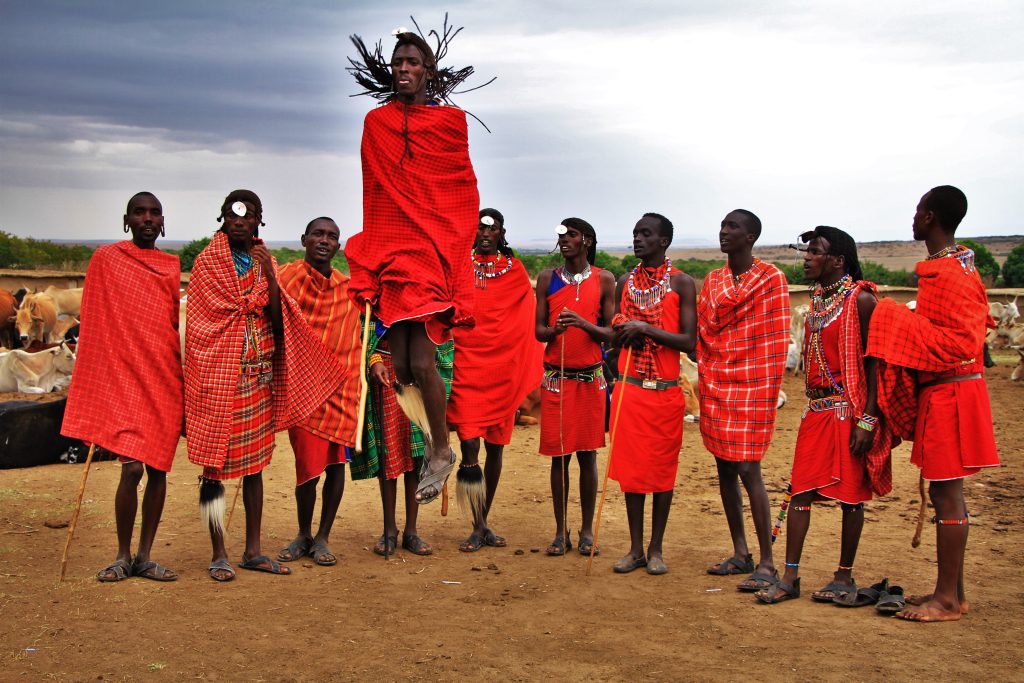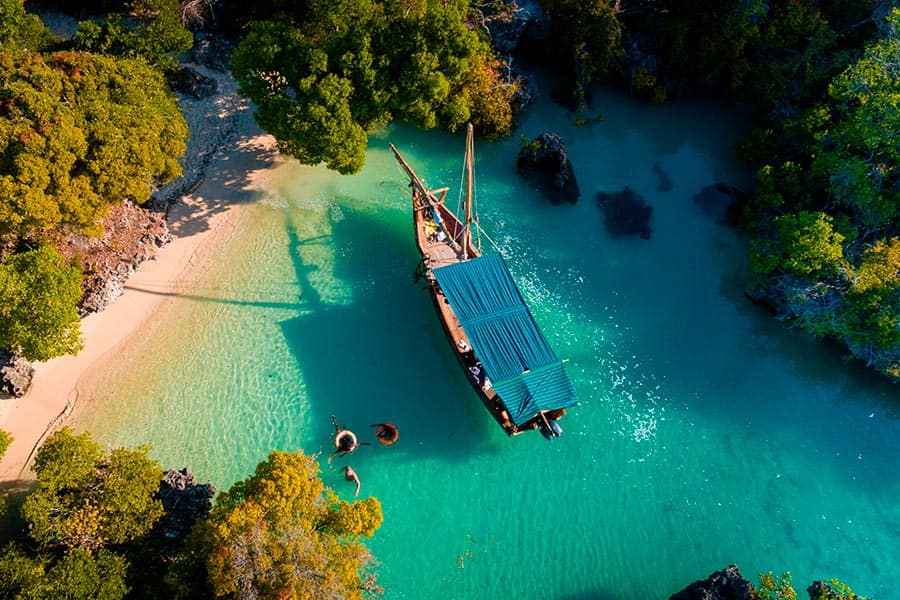Short trip to different destinations accross Arusha Town and closer Destinations for day tours
This are day tour trip and activities that can be enjoyed from or within a single day.





The Hadza, also known as the Hadzabe, are an indigenous ethnic group living in northern Tanzania, primarily around Lake Eyasi in the Rift Valley region. They are one of the last remaining hunter-gatherer societies in the world and have managed to maintain their traditional way of life for thousands of years.
Here are some key aspects about the Hadza tribe:
Lifestyle and Subsistence: The Hadza people rely on hunting, gathering, and some limited horticulture for their subsistence. Their diet mainly consists of wild game such as antelope, baboons, and smaller animals, as well as gathered fruits, tubers, and honey. Hunting and foraging activities are typically done in small groups, and the Hadza are known for their exceptional skills in tracking and survival in the wild.
Social Structure: Hadza society is relatively egalitarian, with no formal centralized leadership. Decision-making is often based on consensus within the group, and there is a lack of hierarchical structures. They live in small, mobile camps consisting of related families, and they frequently move to different areas in search of food and resources.
Language and Culture: The Hadza language is characterized by unique phonetic sounds and is known for its complexity. Their culture is rich with oral traditions, including storytelling, music, and dance. They have a strong connection to their environment and have developed an intricate knowledge of the local flora and fauna.
Land and Threats: The Hadza’s traditional lands have been under pressure due to various factors, including agricultural expansion, tourism, and conservation efforts. As more modern elements encroach upon their territory, the Hadza way of life faces increasing challenges. Land rights and preserving their cultural heritage have become significant concerns for the community.
Research and Anthropological Interest: The Hadza have attracted the attention of anthropologists and researchers due to their unique lifestyle and the insights they offer into prehistoric human practices. Studying the Hadza can provide valuable information about early human societies, subsistence strategies, and social dynamics.
In recent years, efforts have been made to support the Hadza in maintaining their traditional way of life while addressing the challenges they face. NGOs and organizations are working on initiatives related to land rights, sustainable development, and cultural preservation to ensure that the Hadza can continue to live according to their own values and traditions.
It’s important to approach the Hadza community with respect for their cultural practices and to be mindful of the potential impacts of outside influences on their way of life.
The Maasai tribe is a pastoral ethnic group located primarily in Tanzania and Kenya, with smaller populations in neighboring countries such as Uganda and Ethiopia. They are known for their distinct culture, traditional way of life, and distinctive clothing.
Lifestyle and Economy: The Maasai are traditionally semi-nomadic pastoralists, relying on the herding of livestock, particularly cattle, sheep, and goats, for their sustenance. Their way of life is intricately connected to their herds, as they use their animals for food, milk, and blood, which is an essential part of their diet. Cattle also hold significant social and cultural value, often being indicators of a family’s wealth and status.
Dress and Adornments: The Maasai are easily recognizable by their unique clothing and jewelry. Both men and women typically wear brightly colored shukas (sheets of cloth) wrapped around their bodies, and they are known for their intricate beadwork. Beadwork is not only a form of adornment but also carries cultural and social significance. Different colors and patterns of beads can represent aspects of their identity, such as age, marital status, and social standing.
Traditional Dwellings: The Maasai traditionally live in circular, mud-and-dung huts known as “manyattas.” These huts are constructed by the women of the community and are designed to be easily dismantled and moved as the need arises, reflecting the semi-nomadic nature of their lifestyle.
Social Structure: The Maasai society is organized around a hierarchical structure, with elders and warriors holding prominent roles. Elders are responsible for decision-making and passing down the community’s oral history and traditions. Warriors, often young men, are tasked with protecting the community and its herds from external threats, such as predators or raids from other groups.
Cultural Practices: The Maasai have a rich cultural heritage, encompassing oral storytelling, music, dance, and rituals. Many aspects of their culture are centered around ceremonies, such as coming-of-age rituals for young men known as “Moranism,” which involve various tests of strength, courage, and endurance. These ceremonies mark the transition from boyhood to warriorhood.
Challenges and Modernization: The traditional Maasai way of life has faced challenges due to modernization, changes in land use, and urbanization. Access to education, healthcare, and basic amenities has become increasingly important, leading some Maasai to adopt more settled lifestyles. Additionally, conflicts have arisen over land rights and resources as the Maasai’s grazing areas have been encroached upon by agriculture and conservation efforts.
Tourism: The Maasai people and their culture have also become a significant attraction for tourists, particularly in national parks and game reserves in Tanzania and Kenya. Many Maasai have taken on roles as guides, artisans, and performers, allowing them to engage with the global economy while showcasing their traditions.
Overall, the Maasai tribe in Tanzania carries a rich cultural heritage and continues to navigate the complexities of maintaining their traditional way of life in the face of modern challenges.
A Walking Safari in Arusha National Park offers a unique and immersive way to experience the wildlife and natural beauty of the park. Arusha National Park is located in northern Tanzania, near the town of Arusha, and it is one of the smaller national parks in the country. Despite its size, it offers diverse ecosystems, stunning landscapes, and a variety of wildlife, making it an excellent destination for a walking safari.
Here’s what you can expect from a walking safari in Arusha National Park:
Guided Experience: Walking safaris in Arusha National Park are typically conducted with experienced and trained guides. These guides are knowledgeable about the park’s flora and fauna, as well as safety procedures, making your experience both educational and safe.
Small Group: Walking safaris are usually conducted in small groups to minimize the impact on the environment and to ensure that each participant has a personalized and interactive experience.
Close Encounters: Unlike traditional game drives where you observe animals from a vehicle, walking safaris allow you to get much closer to nature. You can see tracks, insects, plants, and birds up close, enhancing your understanding of the ecosystem’s intricacies.
Wildlife Viewing: While large predators are not as commonly seen on walking safaris, Arusha National Park is home to a variety of animals such as giraffes, zebras, buffalo, various antelope species, and an array of birdlife. Your guides will point out these animals and provide insights into their behaviors and habitats.
Scenic Landscapes: The park’s landscapes are diverse, ranging from montane forests to open grasslands, and even the stunning Momella Lakes. Walking allows you to truly appreciate the park’s beauty and take in the views at your own pace.
Educational Experience: Walking safaris offer the opportunity to learn about the smaller, often overlooked aspects of the ecosystem, such as plants, insects, and smaller animals. Guides may share information about medicinal plants, local traditions, and the park’s conservation efforts.
Photography: Walking safaris provide unique photographic opportunities, allowing you to capture the details of the environment, wildlife, and the overall experience.
Safety Precautions: Safety is a priority during walking safaris. Guides are trained to assess the environment and animal behavior to ensure the group’s security. They carry safety equipment and have protocols in place to manage any potential encounters with wildlife.
Physical Requirements: While you don’t need to be an athlete, a reasonable level of fitness is recommended for a walking safari. Trails may vary in difficulty, and participants should be prepared for some physical activity.
A coffee tour in Arusha, Tanzania offers an insightful and engaging experience that allows visitors to learn about the process of coffee cultivation, processing, and production. Tanzania is known for its high-quality coffee beans, and Arusha, in particular, is a region where coffee farming plays a significant role in the local economy. Taking a coffee tour in this area provides a chance to understand the intricate journey from coffee bean to the cup you enjoy.
Here’s what you can expect from a coffee tour in Arusha, Tanzania:
Plantation Visit: The tour usually begins with a visit to a coffee plantation, where you’ll see coffee plants growing in their natural environment. Guides will explain the different coffee varieties and the factors that contribute to their growth, such as altitude, soil, and climate.
Cultivation Process: You’ll learn about the entire cultivation process, from planting coffee seeds to nurturing young plants and ensuring proper growth. Guides will explain the importance of sustainable farming practices and the challenges that coffee farmers face.
Harvesting: Depending on the time of year, you might have the opportunity to participate in or observe the coffee harvesting process. Coffee cherries are usually handpicked when they are ripe, and guides will explain how to identify ripe cherries.
Processing: After harvesting, the coffee cherries go through a series of steps to extract the coffee beans. You’ll learn about methods like wet and dry processing, which remove the outer layers of the cherry to reveal the beans inside.
Drying and Sorting: The beans are dried to an appropriate moisture level to prevent mold and other issues during storage. You’ll get to see the drying beds and learn how beans are sorted and prepared for further processing.
Roasting: One of the highlights of the tour is often the demonstration of coffee roasting. Guides will showcase the roasting process, explaining how different roast levels affect the flavor and aroma of the coffee.
Tasting: No coffee tour is complete without a tasting session. You’ll have the chance to sample freshly brewed coffee made from the beans you’ve seen throughout the tour. Guides will guide you through a coffee tasting, helping you identify different flavors and characteristics.
Cultural Insights: Along the way, you might also learn about the cultural significance of coffee in Tanzania and its role in local traditions and ceremonies.
Local Interaction: Coffee tours often provide an opportunity to interact with local farmers and workers, giving you a glimpse into their lives and the important role that coffee plays in their communities.
Souvenirs: Many coffee tours have a shop where you can purchase freshly roasted coffee beans to take home as souvenirs, supporting local producers in the process.
The Snake Park, Maasai Museum, and Camel Ride in Arusha, Tanzania offer a combination of educational and cultural experiences, as well as a unique opportunity to interact with animals and learn about local traditions. These attractions are often included in guided tours that provide visitors with a comprehensive and enriching experience.
Snake Park: The Snake Park is an educational facility that focuses on snakes and reptiles found in Tanzania. It provides visitors with the opportunity to learn about these creatures, their habitats, behaviors, and the important role they play in the ecosystem. The park typically features various species of snakes, including venomous and non-venomous ones, as well as other reptiles like lizards and crocodiles. Visitors can observe these animals up close, guided by knowledgeable staff who offer insights into snake behavior, snakebite prevention, and conservation efforts. The Snake Park aims to dispel myths and fears surrounding snakes while promoting respect for these creatures.
Maasai Museum: The Maasai Museum offers an immersive experience into the culture and traditions of the Maasai people, an ethnic group native to Tanzania and Kenya. Visitors can learn about the Maasai way of life, their history, traditional clothing, jewelry, housing, and customs. The museum often showcases artifacts, handicrafts, and displays that depict the rich cultural heritage of the Maasai. Guides provide explanations and context, allowing visitors to gain a deeper understanding of the Maasai’s cultural significance and contributions to Tanzanian society.
Camel Ride: Camel rides are a unique way to explore the surroundings and experience a traditional means of transportation in the region. Visitors can embark on guided camel rides that allow them to leisurely traverse the landscape, offering picturesque views and a different perspective on the environment. Camel rides are often led by experienced handlers who ensure safety and provide information about the animals and the local area. It’s a memorable way to connect with the natural beauty of Arusha and gain insight into how camels have been utilized historically in the region.
These attractions are usually located within close proximity to each other, making it convenient to visit all three in a single tour package. Such tours are designed to be both entertaining and educational, offering a well-rounded experience that combines nature, culture, and adventure. When participating in any guided tour that involves animals or cultural experiences, it’s important to choose reputable operators that prioritize animal welfare, cultural sensitivity, and responsible tourism practices. Before embarking on these activities, it’s recommended to inquire about the tour details, duration, and any specific requirements or recommendations.
The Olduvai Gorge tour offers a fascinating journey into one of the most important archaeological sites in the world. Located in the Great Rift Valley of Tanzania, the Olduvai Gorge holds immense significance in understanding human evolution and prehistoric history. The gorge has yielded a wealth of fossils, artifacts, and insights into the ancient past, making it a popular destination for visitors interested in anthropology, archaeology, and natural history.
Here’s what you can expect from an Olduvai Gorge tour:
Archaeological Significance: Olduvai Gorge is often referred to as the “Cradle of Mankind” due to its immense contribution to our understanding of human evolution. It has provided a wealth of fossils and tools that date back millions of years, shedding light on the origins of our species and the development of early human cultures.
Guided Interpretation: Tours to Olduvai Gorge are typically led by knowledgeable guides who provide detailed explanations about the history, discoveries, and scientific significance of the site. These guides help visitors understand the context of the fossils and artifacts found in the area.
Museum Visits: Many Olduvai Gorge tours include a visit to the Olduvai Gorge Museum, which showcases some of the most important discoveries from the site. The museum often features exhibits on human evolution, ancient tools, and the lifestyles of early human ancestors.
Fossil Sites: The tour may take you to different points within the gorge where important archaeological discoveries were made. You might have the opportunity to see the locations where ancient tools, animal fossils, and human remains were found.
Educational Experience: The tour offers an educational experience that delves into the history of paleoanthropology, the work of famous researchers like Louis and Mary Leakey, and the broader implications of the discoveries made at Olduvai Gorge.
Scenic Landscape: While the primary focus is on archaeology and history, the landscape of the Olduvai Gorge is also quite scenic, with views of the surrounding Rift Valley and its unique geological formations.
Photography: Visitors are often allowed to take photographs during the tour, capturing the beauty of the landscape and the historical significance of the site.
Cultural and Historical Context: Guides may share information about the cultural practices of the Maasai people and the local traditions that are intertwined with the history of the area.
Ethical Considerations: Due to the site’s significance, it’s important to respect the rules and guidelines set by the local authorities or tour operators to ensure the preservation of the archaeological remains.
Olduvai Gorge is a place of immense scientific importance that offers a window into our distant past. The tour provides an opportunity to connect with human history in a unique and meaningful way while appreciating the efforts of researchers who have contributed to our understanding of our evolutionary journey.
The Stone Town and Spice Farm tour is a popular excursion in Zanzibar, Tanzania, offering visitors the chance to explore the historical and cultural aspects of Stone Town, the island’s historic city center, and to experience the vibrant spice industry for which Zanzibar is renowned. This combination tour provides a comprehensive view of Zanzibar’s rich history, architecture, and the aromatic world of spices.
Here’s what you can expect from a Stone Town and Spice Farm tour:
Stone Town Exploration:
Historical Sites: Stone Town is a UNESCO World Heritage Site known for its well-preserved architecture, which reflects a mix of Swahili, Arab, Persian, Indian, and European influences. The tour typically includes visits to historical sites such as the Sultan’s Palace, the House of Wonders, and the Old Fort.
Narrow Streets and Markets: You’ll stroll through the labyrinthine streets of Stone Town, observing the intricate door carvings, traditional houses, and bustling markets. The tour often includes visits to Darajani Market and Forodhani Gardens, where you can experience the local culture, interact with vendors, and sample Zanzibar’s street food.
Cultural Insights: Guides share stories and historical insights about Stone Town’s past as a significant trading hub for spices, slaves, and other commodities. You’ll learn about the architecture, the impact of different cultures on the city’s development, and its role in history.
Slave Market and Memorial: The tour may also include a visit to the site of the former Slave Market, offering a sobering glimpse into Zanzibar’s complex history involving the slave trade. The Slave Memorial serves as a poignant reminder of this dark period.
Spice Farm Experience:
Spice Plantations: Zanzibar is famously known as the “Spice Island,” and a visit to a local spice farm is a highlight of the tour. You’ll explore the lush plantations where an array of spices, herbs, and tropical fruits are grown.
Guided Tour: A knowledgeable guide will lead you through the farm, introducing you to various spices such as cloves, cinnamon, nutmeg, vanilla, and more. You’ll learn about the cultivation, harvesting, and processing of these aromatic treasures.
Sensory Experience: The tour engages your senses as you touch, smell, and taste the spices and fruits firsthand. Guides may even show you how the spices are used in traditional Zanzibari dishes.
Cultural Interaction: Interacting with the local farmers provides insights into their way of life, their expertise in cultivating spices, and their traditions. You might also get a chance to enjoy a traditional Swahili lunch prepared with the fresh ingredients from the farm.
Photography, Shopping, and More: Both parts of the tour offer numerous photo opportunities. In Stone Town, you’ll capture the unique architecture and vibrant street scenes. At the spice farm, the colorful fruits and spices make for picturesque scenes.
The Prison Island Tour is a popular excursion from Stone Town, the historic city center of Zanzibar, Tanzania. Also known as Changuu Island, Prison Island offers a mix of historical, cultural, and natural attractions that make it a fascinating destination for visitors. The island’s history includes a former prison, a sanctuary for giant tortoises, and opportunities for relaxation and exploration.
Here’s what you can expect from a Prison Island Tour:
Historical Overview: The tour usually begins with a boat ride from Stone Town to Prison Island. During the journey, guides often provide information about the island’s history and its original purpose as a detention center for slaves in the 19th century. The prison was never actually used for its intended purpose, leading to its alternative name.
Exploring the Island: Upon arrival at Prison Island, visitors have the chance to explore the island’s attractions. One of the main draws is the preserved ruins of the former prison, where you can learn about the historical context and the role the island played during the time of the slave trade.
Giant Tortoises Sanctuary: Perhaps the most famous feature of Prison Island is its population of giant Aldabra tortoises. These gentle creatures roam freely on the island and are known for their impressive size and longevity. Visitors can interact with the tortoises, feed them, and learn about their conservation efforts.
Relaxation and Beach Time: Prison Island often offers beautiful beaches where visitors can relax, swim, and enjoy the Indian Ocean’s turquoise waters. It’s an ideal spot to unwind and take in the stunning coastal views.
Coral Reefs and Snorkeling: The surrounding waters of Prison Island are rich in marine life, making it a great place for snorkeling. Depending on the tour, you might have the opportunity to explore the colorful coral reefs and encounter a variety of fish and other sea creatures.
Cultural and Nature Interaction: Interacting with the giant tortoises and exploring the natural beauty of the island provides a unique opportunity to connect with both the local wildlife and the island’s history.
Photography and Views: Prison Island’s scenic landscapes, the azure ocean, and the tortoises make for great photo opportunities. Whether capturing the historic ruins, the tortoises, or the beautiful coastline, you’ll have plenty to document.
Tour Duration and Inclusions: The duration of the tour can vary, but most tours are half-day trips. Some tours might include lunch, snorkeling gear, and other amenities.
Embark on an exhilarating cycling adventure through the scenic foothills of Mt. Kilimanjaro.
Experience the camaraderie of a day hike in the shadow of this majestic mountain.
Discover the beauty of Ndoro Waterfall on a short but rewarding hike through a lush forested path.
Tour a local coffee farm to taste the renowned 100% Arabica coffee, known for its fresh flavor and smooth texture.
Hike to the spectacular 90-meter Materuni Waterfall nestled in the foothills of Mt. Kilimanjaro.
Soak in the rejuvenating waters of Kikuletwa and Chemka hot springs, a perfect relaxation spot.
Explore the pristine shores of Lake Chaka, a serene location for nature enthusiasts.
Immerse yourself in the natural beauty and cultural history of the region.
Visit the Olpopongi Maasai Cultural Village to engage with Maasai traditions and culture.
Enjoy mountain biking or hiking adventures in the scenic Rau Forest Reserve
Experience the wonder of the 90-meter-high Materuni Waterfall, nestled in the foothills of Mt. Kilimanjaro, on a moderately challenging but highly rewarding hike.
Explore the fertile lower slopes of Kilimanjaro and taste the exquisite 100% Arabica coffee, famous for its fresh and smooth flavor.
Located in the northeast of Arusha National Park, the seven shallow and alkaline Momela Lakes offer excellent opportunities for canoeing and bird watching.
Immerse yourself in Maasai culture and traditions with a visit to the Olpopongi Maasai Cultural Village.
Embark on thrilling game drives, guided walks, and hot air balloon safaris to get up close and personal with Africa’s magnificent wildlife.
Immerse yourself in the traditions, music, and dances of Tanzanian tribes while gaining insights into their way of life.
Conquer the peaks of Kilimanjaro or explore the lesser-known, but equally stunning, routes like Mount Meru.
Relax on the pristine shores of Zanzibar, Pemba, or Mafia Island, where turquoise waters and swaying palm trees create the perfect tropical escape.
Let us create a personalized itinerary that matches your interests, budget, and schedule.

All of the Itineraries packages can be considered as samples that can be tailored to fit your needs and budget. Itinerary packages, which most of our clients likely prefer, Based on your budget we can advise what’s best for you.
We help you plan your next historical safaris and adventure to Africa and Tanzania.
© 2023 Majestic Safari • All Rights Reserved
Inquire about our services by filling out this form.